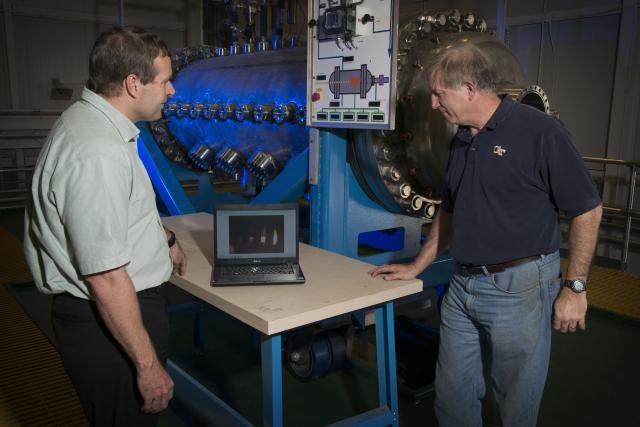NASA scientists are currently researching ways of safely sending astronauts to Mars using advanced nuclear rockets.
Engineers at NASA’s Marshall Space Flight Center in Huntsville, Ala., are simulating nuclear thermal rocket fuels with non-nuclear materials – which will be capable of propelling future exploration missions to the Red Planet and beyond.

According to Mike Houts, project manager for nuclear systems at Marshall, a nuclear rocket engine uses a nuclear reactor to heat hydrogen to very high temperatures, which expands through a nozzle to generate thrust.
“Nuclear rocket engines generate higher thrust and are more than twice as efficient as conventional chemical rocket engines,” he explained.
“[However, these] rocket concepts are not new, [as] the United States conducted studies and significant ground testing from 1955 to 1973 to determine the viability of nuclear propulsion systems, but ceased testing when plans for a crewed Mars mission were deferred.”
The team recently used Marshall’s Nuclear Thermal Rocket Element Environmental Simulator, or NTREES, to perform realistic, non-nuclear testing of various materials for nuclear thermal rocket fuel elements.

In an actual reactor, the fuel elements would contain uranium, but no radioactive materials are used during the NTREES tests. Among the fuel options are a graphite composite and a “cermet” composite – a blend of ceramics and metals. Both materials were investigated in previous NASA and U.S. Department of Energy research efforts.
The NTREES facility is designed to test fuel elements and materials in hot flowing hydrogen, reaching pressures up to 1,000 pounds per square inch and temperatures of nearly 5,000 degrees Fahrenheit – conditions that simulate space-based nuclear propulsion systems to provide baseline data critical to the research team.
“A first-generation nuclear cryogenic propulsion system could propel human explorers to Mars more efficiently than conventional spacecraft, reducing crews’ exposure to harmful space radiation and other effects of long-term space missions,” said Houts.
“It could also transport heavy cargo and science payloads. Further development and use of a first-generation nuclear system could also provide the foundation for developing extremely advanced propulsion technologies and systems in the future — ones that could take human crews even farther into the solar system.”
Building on previous, successful research and using the NTREES facility, NASA can safely and comprehensively test simulated nuclear fuel elements of various sizes, providing important test data to support the design of a future Nuclear Cryogenic Propulsion Stage.

A nuclear cryogenic upper stage – its liquid-hydrogen propellant chilled to super-cold temperatures for launch – would be designed to be safe during all mission phases and would not be started until the spacecraft had reached a safe orbit and was ready to begin its journey to a distant destination. Before startup in a safe orbit, the nuclear system would be cold, with no fission products generated from nuclear operations, and radiation below significant levels.
“The information we gain using this test facility will permit engineers to design rugged, efficient fuel elements and nuclear propulsion systems,” said NASA researcher Bill Emrich, who manages the NTREES facility at Marshall. “It’s our hope that it will enable us to develop a reliable, cost-effective nuclear rocket engine in the not-too-distant future.”






